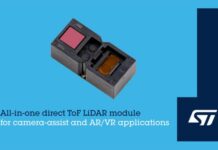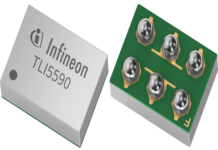In the ever-evolving realm of technology, sensors have emerged as silent architects, sculpting our interaction with the environment and propelling industries towards a future steeped in efficiency and innovation. As we traverse the landscape of sensor technology in 2024, we glean insights from industry luminaries, weaving their comments seamlessly into a narrative that unravels the intricacies, challenges, and anticipated breakthroughs within the sensor domain.
Exploring Today’s Dynamic Sensor Tapestry Landscape
To comprehend the sensor landscape, it’s crucial to grasp the diverse sensor types shaping our reality. Pooja Bhadrappanavar, Staff Business Development Manager at Renesas Electronics Corporation, notes, “Environmental parameters like humidity directly impact our comfort, and post-Covid, awareness about air quality has surged. Chemical pollutants, including VOCs, Ozone, and Nitrogen Dioxide, pose health risks, emphasizing the role of sensors in monitoring and remediation.”
Humidity’s impact on comfort and health is profound, influencing virus transmission and mold growth. Post-Covid, air quality awareness has escalated, prompting the continuous monitoring of pollutants like VOCs. OMRON, with sensors like D7S and D6T, showcases versatility from seismic detection to human body temperature sensing. Renesas, on the other hand, pioneers MOX sensors with digital processors for real-time analytics.
Anticipating trends, integration of AI within sensors is expected, driving breakthroughs in data-driven decision-making. The future entails non-intrusive, long-life sensors in power systems, alongside disposable sensors for data analytics. Ensuring robustness from a cybersecurity standpoint and integrating sensors into self-healing networks are pivotal for the future of sensor technology.
Navigating the Symphony of Sensors Across Industries
In navigating the symphony of sensors, OMRON’s MEMS-based sensors, highlighted by Manoj Kodakkatery, bring transformative impact across diverse industries. These sensors, from non-contact thermal to TOF sensors, play pivotal roles in human presence detection, HVAC control, and logistics. Environmental parameters, especially humidity, are crucial, and OMRON’s advanced technology contributes to enhanced monitoring.
The COVID-19 awareness has amplified the importance of air quality, with OMRON’s range, including MOX sensors, addressing the need for continuous indoor air quality monitoring. The paragraph further explores OMRON’s diverse sensor technologies, such as light beam-based sensors and seismic sensors, showcasing their applications in various industries.
Environmental sensors play a key role in energy efficiency, comfort improvement, and wellbeing enhancement. OMRON’s sensors like D7S for hazard detection and TOF sensor for logistics showcase versatility. In the digitalization era, sensors contribute significantly to real-time monitoring and predictive maintenance.
Looking forward, the anticipated trends involve integrating sensors with AI for actionable insights. Sensors’ evolving role aligns with industries embracing AI, managing aging populations, and moving towards decarbonization. The demand for sensors in extreme conditions, coupled with the need for cyber-secure and networked sensors, highlights the dynamic landscape of sensor technology across industries.
In the Heart of Power Systems: Sensors Unveiling Real-time Evolution
In the realm of power systems, Akilur Rahman, CTO – India, Hitachi Energy, emphasizes the transformative shift from point sensing to a network of sensors, stating, “The evolution from point sensing to a network of sensors is transformative. Soft sensors, virtual entities processing multiple measurements, have become integral. Challenges arise in harsh operating conditions – from high altitudes to the depths of the sea – demanding sensors that are robust, reliable, and possess an extended lifespan.”
This sensor evolution ensures power system safety and efficiency. Environmental factors like humidity impact human comfort, with heightened awareness post-Covid-19, emphasizing air quality monitoring. OMRON’s diverse sensor technologies, from MEMS to TOF sensors, play a crucial role. In the digitalization era, sensors contribute to real-time monitoring, predictive maintenance, and efficiency improvement.
Despite challenges like calibration and sensor lifetime, OMRON addresses these concerns, providing robust solutions for harsh operating conditions. Upcoming trends in environmental sensors, integrating hardware and AI, are anticipated to further enhance differentiation and insights.
In power systems, the demand is for non-intrusive, long-life sensors in extreme conditions. Simultaneously, cost-effective, disposable sensors can serve for supplementary data. Multi-functional sensors, robust in cybersecurity, networked for self-healing, promise autonomous power system operations, aligning with the evolving sensor landscape.
Challenges and Solutions
In navigating the Sensor Odyssey, challenges and solutions emerge. Pooja Bhadrappanavar emphasizes the complexity of integrating multi-sensor data, while Manoj Kodakkatery stresses the importance of compatibility in a rapidly advancing sensor landscape. Akilur Rahman highlights the need for continuous innovation, particularly in developing sensors for extreme environments.
Adding to the complexity, awareness about air quality post-Covid-19 has surged. OMRON addresses this with a diverse range of sensor technologies, including MEMS and light control. These sensors play a crucial role in monitoring pollutants, such as VOCs and PM2.5, aligning with industry standards like ASHRAE and WELL.
The challenges of calibration and sensor lifetime are addressed, with OMRON’s commitment to longevity and modular solutions. The paragraph on professionals facing challenges underscores OMRON’s solutions for detecting stationary and transparent objects.
Looking forward, the anticipation is for integrated hardware and AI-driven trends in environmental sensors. OMRON’s sensors, from human body temperature measurement to logistics automation, showcase their versatility and impact across industries. The broader trend towards automation and optimization is evident, positioning sensors as key players in achieving outcomes related to AI, aging population management, and decarbonization.
Anticipated Trends and Breakthroughs
Looking ahead, the future of sensor technology is marked by the integration of environmental sensors with artificial intelligence (AI), enabling more actionable insights. As industries embrace AI for aging population management and decarbonization, there’s a rising demand for advanced sensors capable of robust data collection and analysis.
The mid-economy’s growth fuels the need for comfort and luxury, driving the development of sensor technology to enhance efficiency and user experiences across industries. In power systems, there’s a demand for non-intrusive, long-life sensors in extreme conditions, alongside cost-effective, disposable sensors for less critical data.
Sensors are evolving into multi-functional devices, incorporating data storage, computation, communication, and integration with actuators for faster responses. Cybersecurity robustness is crucial, with sensors expected to detect vulnerabilities, attacks, and incidents. In networked operations, sensors aim to provide self-healing functionality for autonomous power system operation.
In summary, upcoming trends in environmental sensors involve integrated hardware and AI, catering to diverse industry needs and providing actionable data for decision-making. The evolving sensor landscape addresses a variety of applications, offering innovative and efficient solutions.
Crafting an Independent Sensor Symphony
Amid expert insights, the sensor landscape resembles a symphony of diverse elements shaping technology’s harmonious progression.
Sensors, like MEMS-based ones, enhance efficiency, offering precise data for decisions. In power systems, from conventional to fibre optic, sensors transition from point sensing to a network, reflecting collaborative tech evolution.
Environmental parameters add complexity; OMRON’s innovations address challenges, from humidity affecting comfort to real-time air quality monitoring post-Covid. In power systems, robust sensors endure extreme conditions.
Advancements in sensor technology, like smaller, energy-efficient MOX sensors, demonstrate commitment to efficiency. OMRON’s varied sensors, from hazard detectors to body temperature sensors, showcase broad applications.
Challenges like calibration are met with OMRON’s longevity commitment. Upcoming trends involve integrating AI within sensors for actionable insights.
In a rising mid-economy, sensors play a vital role in comfort and luxury demands. Their multi-functionality, cybersecurity role, and potential for self-healing operations underline their transformative impact on various industries.
Environmental Parameters and Air Quality Awareness
Environmental parameters like humidity directly impact perceived comfort among people. At very high or very low humidity levels, we immediately feel uncomfortable. Extended low humidity levels are good transmitting grounds for viruses and high humidity levels breed mold and bacteria.
Since the Covid-19 pandemic, there has been an increase in awareness among people and institutions about air quality. Chemical pollutants like Volatile organic compounds (VOCs), Ozone (O3), and Nitrogen Dioxide (NO2) contribute to serious respiratory illnesses, Asthma and COPD (Chronic Obstructive Pulmonary Disease) when exposed to extended periods of time. At low concentrations of these exposures, we can experience headaches, skin irritation and reduced cognitive abilities directly impacting productivity of employees and students. Monitoring these pollutants continuously indoors is now a priority, with standards such as ASHRAE, WELL, and RESET necessitating the implementation of ventilation or air purification systems based on sensor feedback.
Particulate matter (PM2.5) is the fine dust particles that have a diameter of less than 2.5 micron which is 100 times less than the diameter of human hair. These particles could get into respiratory channels and blood stream and cause serious health repercussions like COPD, respiratory disorders, heart attacks, decreased lung function etc. Particulates need to be monitored and remedied to reduce these risks.
Advancements in Humidity and Temperature Sensor Technology
Humidity and temperature sensor technology has advanced significantly over the past two decades. These sensors have become notably smaller, feature low power consumption (as low as 300nA for a single measurement), and are more cost-effective. We utilize a unique capacitive layer recipe for humidity measurement, enhancing resistance to contamination issues during assembly.
Metal oxide (MOX) sensors have also undergone remarkable evolution in the last 20 years, transitioning from analog sensors in larger TO-can packages to current digital sensors. These modern sensors are compact, exhibit rapid response times, and consume minimal power, enabling battery operation. For example, Renesas offers low-power analog and digital MOX sensors capable of measuring total Volatile Organic Compounds (VOCs), equivalent Carbon Dioxide (derived from VOC levels), Ozone, and Nitrogen Dioxide (NO2). These MOX sensors offer selectable firmware/operating mode options and feature built-in advanced calibration using techniques based on neural networks and artificial intelligence.
Today, many MOX sensors incorporate a digital processor to handle environmental parameters collected from analog sensors, including PM1, PM2.5 and PM10. The on-board MCU needs to manage the onboard sensors and unlock additional features such as event classification, providing users with valuable insights about their environment. Through multi-sensor data and real-time analytics, events like cleaning, cooking, vaping, and smoking can be identified. These integrated sensor modules streamline design processes by offering a compact, pre-calibrated module with built-in firmware, accelerating development timelines.
The Role of Sensors in Automation and Optimization
The development of sensor technology is driven by the need for automation and optimization in the industry. Sensors play a crucial role in automating processes, reducing power consumption, and promoting sustainability. They also contribute to creating environments that are safe, secure, comfortable, convenient, and highly efficient.
Recent innovations in sensor technology include the TOF Sensor for patient monitoring and the cost-effective Color Sensor for detecting oil color deterioration in pneumatic machines. These advancements demonstrate the ongoing potential of sensors to improve and optimize various aspects of our lives.
One example of sensor technology evolution is from being point sensing to network of sensors working in tandem for sensing system operating conditions in addition to individual equipment, device or process. Sensing concepts have evolved from physical sensors to soft sensors or virtual sensors being used for software where several measurements are processed together.
Applications of Environmental Sensors in Various Industries
- Environmental Sensors are used in thermostats and HVAC controllers to increase energy efficiency through demand-controlled ventilation (DCV).
- Environmental sensors improve comfort and wellbeing by creating awareness through continuous monitoring and triggering remediation in products like standalone indoor air quality monitors, air purifiers and humidifiers.
- Sensor data improves HAVC filter monitoring and maintenance.
- Sensors’ data could automate ventilation in range hoods.
- TVOC sensor detects food spoilage through selective measurement of volatile sulphur gas emissions in cold chain applications and refrigerators.
- Sensors’ data with AI could help notify users of activities like smoking in rental cars, vaping in schools, etc.
Here is a lowdown of utility of varied OMRON Sensors:
- OMRON D7S: Saving Lives from collateral damage while shutting down the hazard’s centers.
- OMRON D6T: Ideal for human body temperature non-contact sensor in medical field; detection of human presence in corporate offices; people count in big malls and airports; and automation in washrooms
- OMRON D6F: Very useful for air conditioner clog detection
- OMRON TOF Sensor: Logistics and warehouse automation and patient and old people monitoring.
- OMRON B5W-LB – Detecting even transparent objects in a variety of applications such as robot cleaners, soap/sanitizer dispensers, elevator switches etc.
In the digitalisation era, sensors are making big impacts towards asset and operation performance improvement by enabling on-line real-time monitoring, predictive and prescriptive maintenance using AI-ML algorithms. They reduce the downtime, extend life of assets, and bring in efficiency. In critical equipment like transformers, sensors help in detecting incipient faults thereby avoiding costly failures and mal functions. In transmission line corridors, image and video sensors based on fixed locations, satellite, and drone help in managing vegetation across hundreds of kilometres of distances.
Addressing Challenges in Sensor Technology
Main challenges with discrete environmental sensors are calibration and lifetime of these sensors. Our humidity and temperature, and MOX sensors are tested to last 10+ years on the field. Another main issue is the mechanical design to allow the sensors to measure ambient air quality parameters and not just the enclosure. With increased types of sensors needed to measure air quality, providing modular solution that integrate multiple sensors also helps customer accelerate their design cycles. Professionals working with sensors face several key challenges, including detecting stationary objects, transparent objects, and objects that are shiny or black. Our D6T sensor can measure the temperature of an object, regardless of its rate of movement, while our B5W-LB sensor can reliably detect transparent, shiny, and black objects. Additionally, we offer sensors in very small sizes and our TOF sensors are resistant to errors caused by ambient light. These features in OMRON solutions help to address some of the common challenges faced by professionals working with sensors. Applying the sensors in device/equipment/system where operating conditions are harsh, e.g. high voltage, high power, electro-static and electro-magnetic radiations, temperature, pressure, etc. For example, in high power installations in high altitudes of Leh-Ladakh too deep in the sea 3000 meters below the surface of water how to develop sensors which are robust, reliable and have longer life.
Anticipated Trends and Breakthroughs in Sensor Technology
Upcoming trends in environmental sensors will drive towards more integrated hardware and artificial intelligence within to help customers differentiate themselves and provide key insights and actionable data to users. The field of sensor technology is expected to see potential breakthroughs in the near future. As industries move towards AI, aging population management, and decarbonization, there is a growing demand for sensors to collect data and provide insights for decision-making. Sensors play a crucial role in achieving desired outcomes by providing information about the status and surroundings of various systems. Additionally, the rise of the mid-economy is driving demand for more comfort and luxury, further fueling the development of sensor technology. With their ability to collect and provide data, sensors have the potential to play a significant role in shaping the future of various industries. In power system, the need is more and more non-intrusive and long-life sensors which can operate in extreme environmental, electrical high power, high voltage, electro-magnetic and mechanical operating conditions. At the same time cheaper and use-and-throw type of sensors can be used for good-to-have data and analytics. Sensors can be for multi-function with data storage, computation, communication and integrated with actuator for faster actions. Sensors which are robust from cyber security point of view and help in detecting security vulnerabilities, attacks and incidents in the system. Finally, sensors which in a networked operation provide self-healing functionality and make the operation of power systems autonomous.















